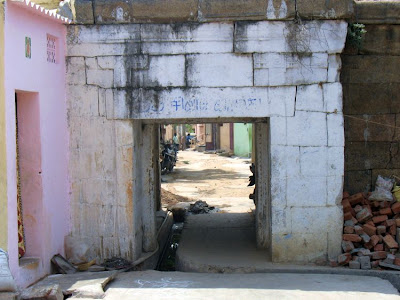10th Day
of Vasantha Utsavam Festival at Arunachala
The below is a pictorial report of the tenth day of the recently concluded 2018 Vasantha Utsavam Festival at Tiruvannamalai.
Day 10: Sunday 29 April, 2018
Morning:
Ayyankulam Tank. Theertavari
Night:
Special puja at Gopala Vinayaka Temple (near Thrishul Hotel)
Night:
Temple Manmatha firing after 11 p.m.
On the the tenth and final day of this Festival, Lord Somaskanda and the Goddess go outside the temple on procession in palanquins. The procession completes at the Ayyankulam Tank in front of Arunagirinathar Temple (the third most famous Siva Temple at Arunachala). It is here where Teerthavari will be observed.
After the ceremony and attendant rituals are complete, the Gods return to Arunachaleswarar Temple.






























































